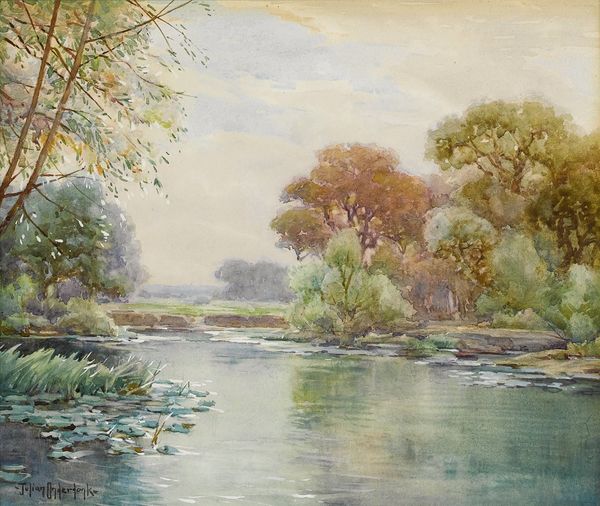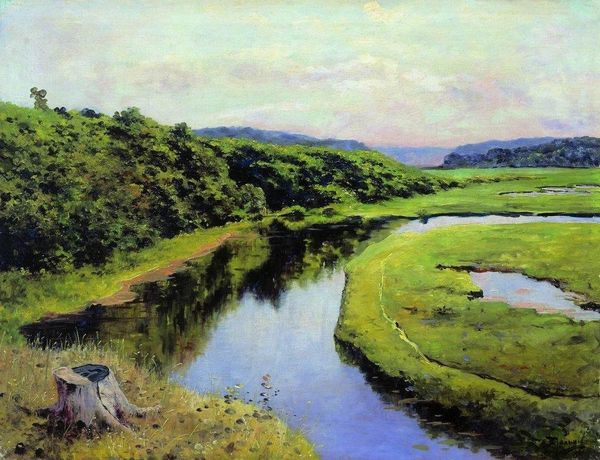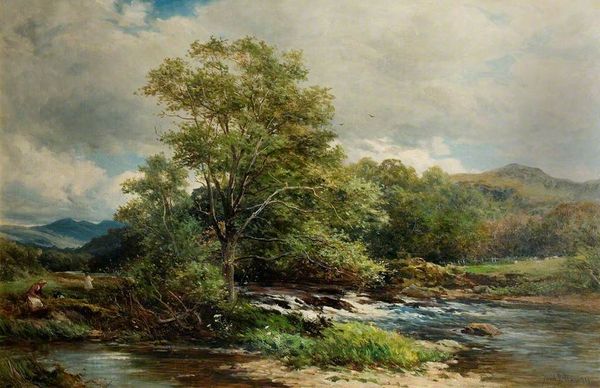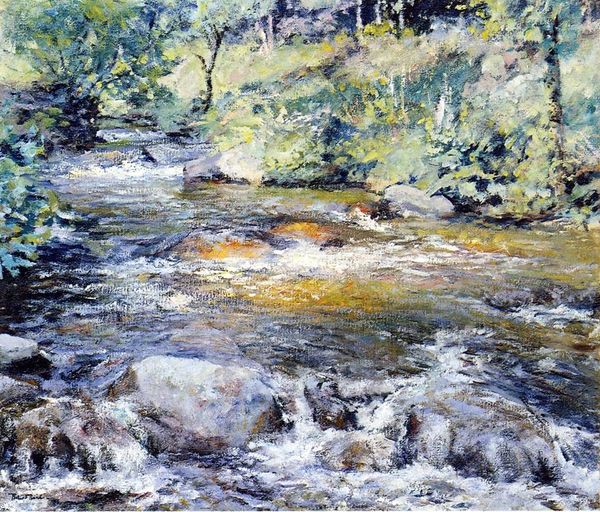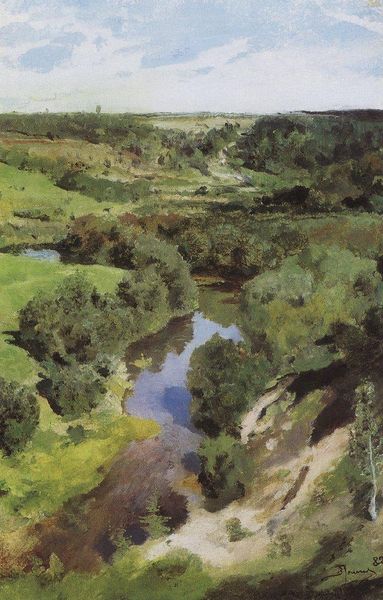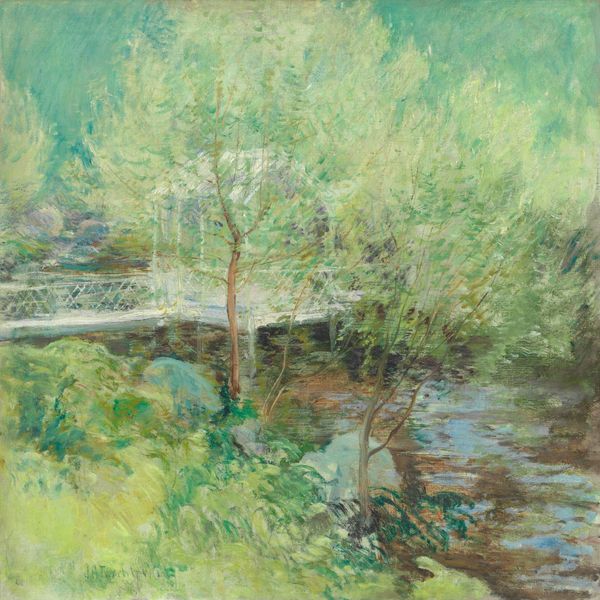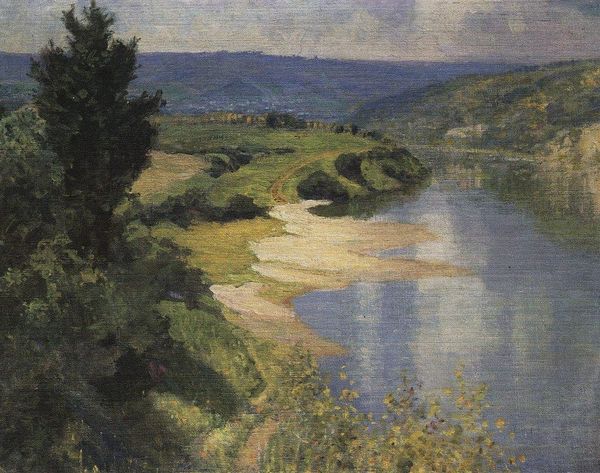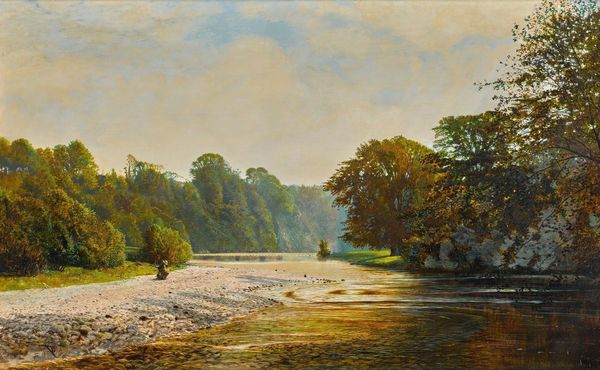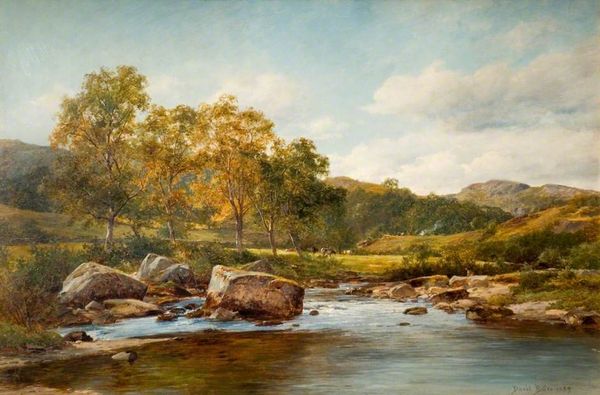
plein-air, oil-paint
#
impressionism
#
plein-air
#
oil-paint
#
landscape
#
river
#
impressionist landscape
#
nature
#
oil painting
#
orientalism
Copyright: Public Domain: Artvee
Edward Mitchell Bannister, a Black artist in late 19th-century America, painted this oil on canvas landscape, titled Streamside. Bannister's work emerged during a period of immense social change. As the United States grappled with the aftermath of slavery and the complexities of Reconstruction, images of peaceful landscapes provided an escape from harsh realities. The art world at this time was dominated by white institutions and narratives, and yet Bannister achieved considerable recognition, becoming one of the founders of the Providence Art Club. How might we read this painting as a quiet act of resistance? Bannister’s choice to paint a scene devoid of figures invites contemplation on the relationship between nature and individual experience. Bannister's landscapes may symbolize the freedom and belonging still denied to many African Americans. Historical research into Bannister’s biography and the social context of his time deepens our understanding of this painting. Through careful investigation, we can appreciate the meaning of art as something shaped by, and in dialogue with, the world around it.
Comments
No comments
Be the first to comment and join the conversation on the ultimate creative platform.
